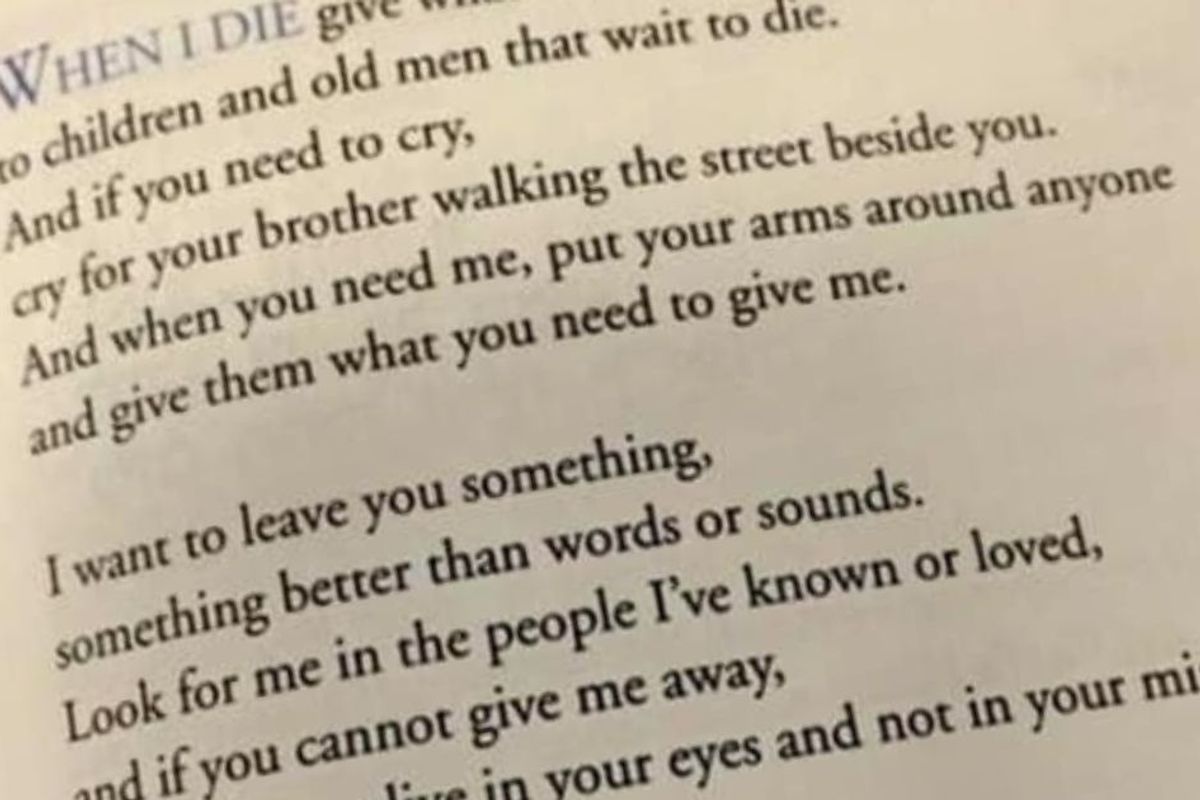
If there's one thing that unites us all, it's the inevitability of death. That may sound morbid, and it's not something most of us care to think about, but our mortality is something every person on Earth has in common.
However, ideas and beliefs about what dying means are as diverse as humanity itself. So when someone manages to nail a universal truth about death, we pay attention. And when someone does so in a way that touches us deeply, we share it as a way to say, "Look at this gorgeous evidence of our shared human experience."
A poem posted by David Joyce on Facebook hits that mark. Written by contemporary writer Merrit Malloy, "Epitaph" captures how our loved ones can best keep our essence alive after our death—not merely through reminiscence, but through purposeful acts of love.
Joyce said that the poem is included in the Reform Jewish liturgy as an optional reading before the Kaddish, a prayer traditionally recited for the dead. But it is also used regularly in all kinds of funerals and memorial services, and Joyce's posting of it has been shared more than 123,000 times in a little over a week.
Read it, and you'll see why.
Epitaph - By Merrit Malloy
When I die
Give what's left of me away
To children
And old men that wait to die.
And if you need to cry,
Cry for your brother
Walking the street beside you.
And when you need me,
Put your arms
Around anyone
And give them
What you need to give to me.
I want to leave you something,
Something better
Than words
Or sounds.
Look for me
In the people I've known
Or loved,
And if you cannot give me away,
At least let me live on in your eyes
And not your mind.
You can love me most
By letting
Hands touch hands,
By letting bodies touch bodies,
And by letting go
Of children
That need to be free.
Love doesn't die,
People do.
So, when all that's left of me
Is love,
Give me away.
While the world rages on around us, let's just sit for a moment in this beauty and remember that when all is said and done, the love we leave behind is all that will remain of us after we're gone.
Thank you, Ms. Malloy, for the gift of your words.
This article originally appeared on 10.23.19
- A haunting poem captures the 'Kyle Rittenhouse moment.' America: 'come get your children.' - Upworthy ›
- A haunting poem captures our Kyle Rittenhouse moment. America: 'come get your children.' - Upworthy ›
- Meet the rebel poet who pioneered symbolism and inspired Bob Dylan, Arthur Rimbaud - Upworthy ›
- 'Life in a Day' film illustrates what unites us - Upworthy ›
- Crosby, Stills, Nash and Young perform with Tom Jones - Upworthy ›
- 92-yr-old former dancer with dementia wrote a powerful poem - Upworthy ›





 Rihanna Nails GIF
Rihanna Nails GIF

 Good luck trying to catch a gazelle.
Good luck trying to catch a gazelle. Chickens will eat just about anything.
Chickens will eat just about anything. There's actually a big difference between horses and zebras besides just the stripes.
There's actually a big difference between horses and zebras besides just the stripes. Stop Right There The End GIF by Freeform
Stop Right There The End GIF by Freeform